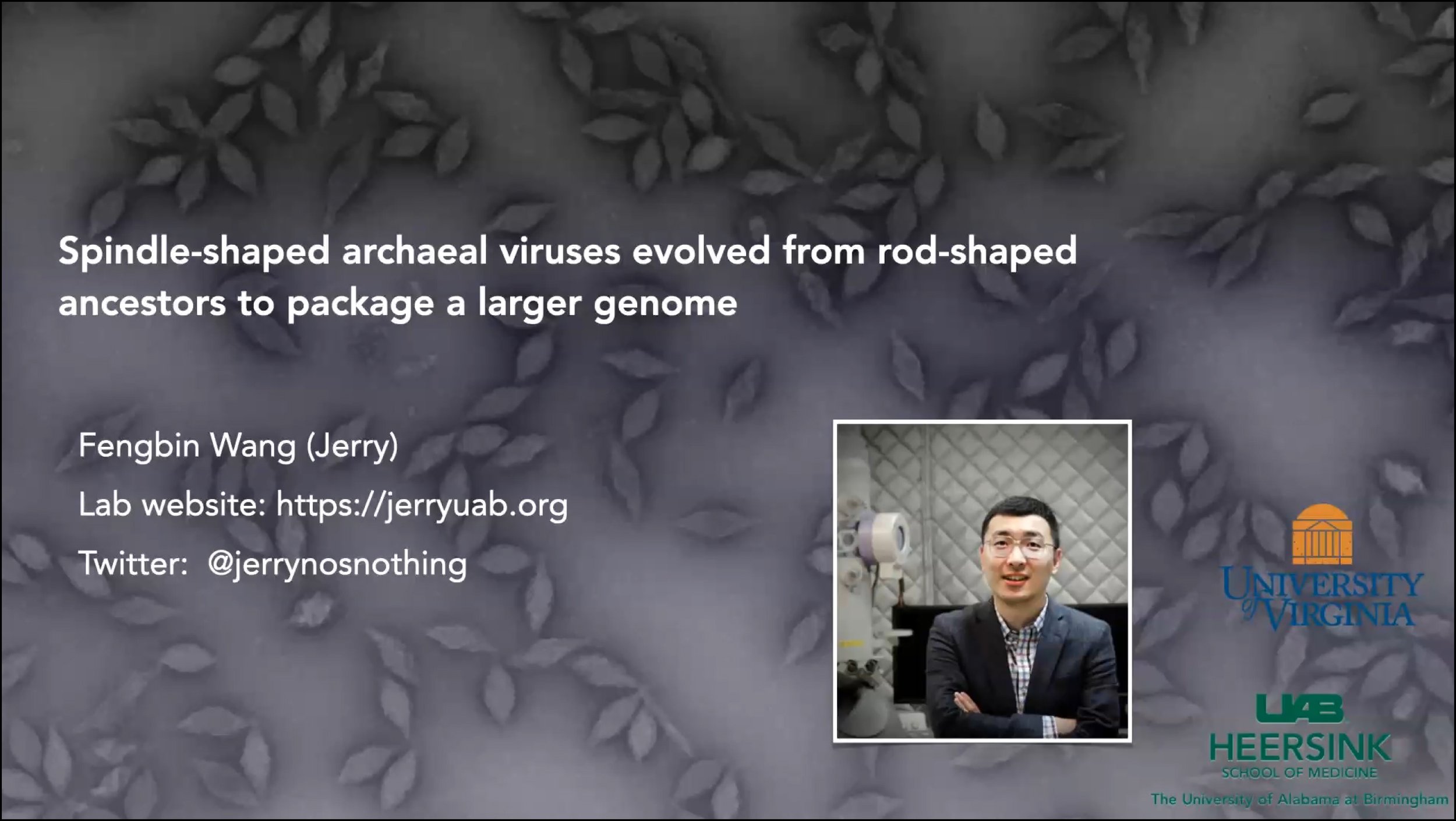Spindle-shaped archaeal viruses evolved from rod-shaped ancestors to package a larger genome
Fengbin Wang1, Virginija Cvirkaite-Krupovic2, Matthijn Vos3, Leticia C Beltran1, Mark A B Kreutzberger1, Jean-Marie Winter3, Zhangli Su1, Jun Liu4, Stefan Schouten5, Mart Krupovic6, Edward H Egelman7
- Department of Biochemistry and Molecular Genetics, University of Virginia, Charlottesville, VA 22903, USA.
- Institut Pasteur, Université de Paris, CNRS UMR 6047, Archaeal Virology Unit, 75015 Paris, France.
- NanoImaging Core Facility, Centre de Ressources et Recherches Technologiques (C2RT), Institut Pasteur, 75015 Paris, France.
- Department of Microbial Pathogenesis & Microbial Sciences Institute, Yale University School of Medicine, New Haven, CT 06510, USA.
- NIOZ Royal Netherlands Institute for Sea Research, Department of Marine Microbiology and Biogeochemistry, Texel, the Netherlands.
- Institut Pasteur, Université de Paris, CNRS UMR 6047, Archaeal Virology Unit, 75015 Paris, France. Electronic address: mart.krupovic@pasteur.fr.
- Department of Biochemistry and Molecular Genetics, University of Virginia, Charlottesville, VA 22903, USA. Electronic address: egelman@virginia.edu.
Abstract
Spindle- or lemon-shaped viruses infect archaea in diverse environments. Due to the highly pleomorphic nature of these virions, which can be found with cylindrical tails emanating from the spindle-shaped body, structural studies of these capsids have been challenging. We have determined the atomic structure of the capsid of Sulfolobus monocaudavirus 1, a virus that infects hosts living in nearly boiling acid. A highly hydrophobic protein, likely integrated into the host membrane before the virions assemble, forms 7 strands that slide past each other in both the tails and the spindle body. We observe the discrete steps that occur as the tail tubes expand, and these are due to highly conserved quasiequivalent interactions with neighboring subunits maintained despite significant diameter changes. Our results show how helical assemblies can vary their diameters, becoming nearly spherical to package a larger genome and suggest how all spindle-shaped viruses have evolved from archaeal rod-like viruses.
Presented By Fengbin Wang | ORCID iD

